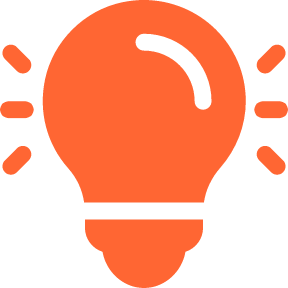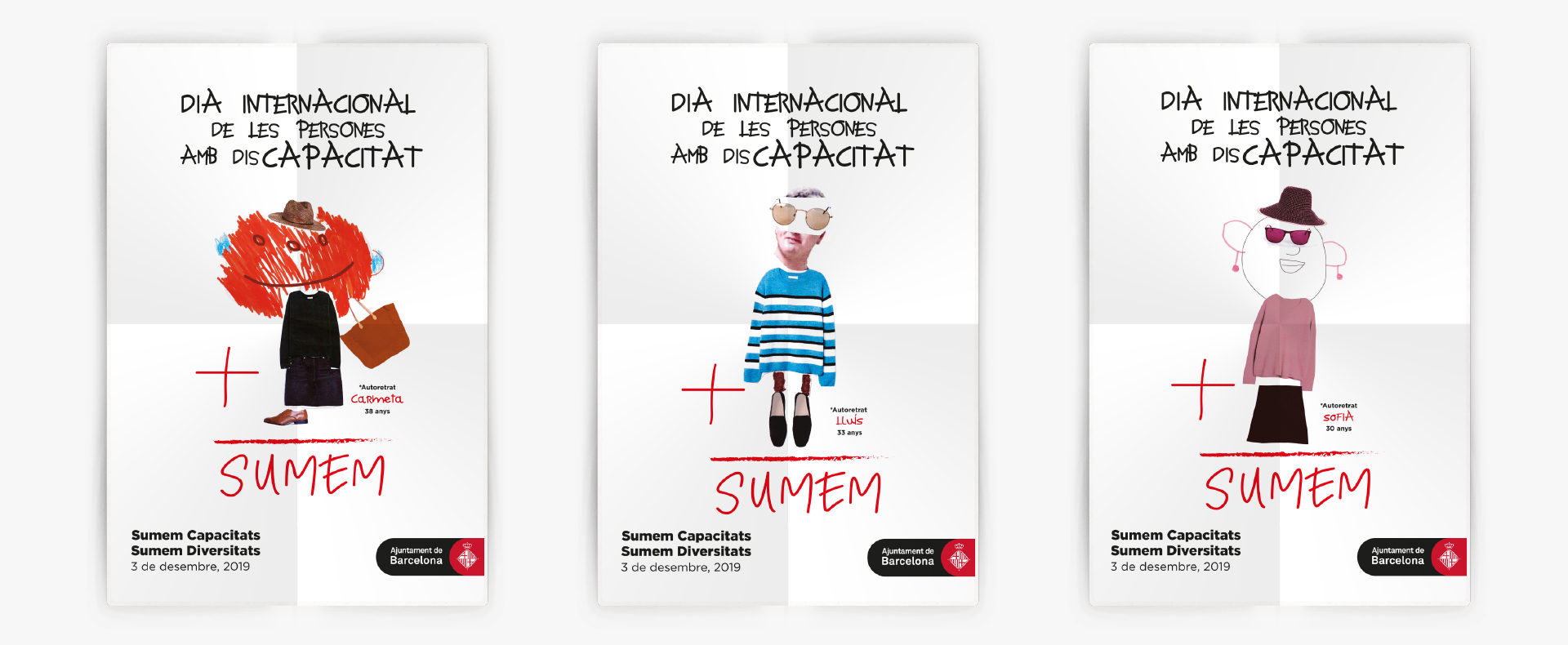Let’s add capacities, let’s add diversities

Illuminating the third sector through a solidarity, creative and inclusive design contest.
Why we decided to enter the competition
It was April 2019 and an information arrived in our email that, depending on what time of day you are in and due to overwork, you would save in the pending folder to value. It was a design competition. So far, so normal. This type of emailing tends to be common, since fortunately we have numerous contests of this style, to which one would like to submit more often, but they can not always be a priority. And, as you can imagine, if we show up, we show up to do well.
The specific message came from Fundació Ludàlia, a non-profit organization that normalizes leisure and culture for people with intellectual disabilities of legal age. We were informed that l'Ajuntament de Barcelona had opened the call for design proposals for the II Contest for the image of the International Day of Persons with Disabilities, which is celebrated every December 3. And we didn't think twice about it.
Our objective: To increase the visibility of the third sector in society.
We already had a close relationship with Ludàlia (now even more), as we had already collaborated on projects such as digital communication consulting or a conference on social networks for young people with intellectual disabilities. So the proposal took on an added value, especially for the final objective: to help make visible a sector that still today does not receive all the attention it deserves.
The foundation told us that we could surely design an original image and encouraged us to present ourselves. Undoubtedly, there is no better motivation to do something than the one that comes from the essence that you must finally transmit. And we got to thinking. Before, logically, than to design. Then, the great idea came up. Diving among the values of Ludàlia and those of be shared, we find a common nexus: personalized treatment. What did this mean? That both of us always work through the person, getting to know them, deciding together with them and making them the protagonist of their idle life (in the case of the foundation) or of their brand (in our case). We already had the most important thing. And, mind you, we hadn't picked up the pencil yet.
The creative process was marked by the sum of capabilities and diversities
At this point, we needed to know how we would apply this idea to the design. And we hit the nail on the head again thanks to the slogan that represents the International Day of Persons with Disabilities. "Sumem capacitats , sumem diversitats". Eureka! The idea was for people with disabilities themselves to be the creative source of these posters together with us. In other words, we would add capabilities and give them the possibility to show the world how they see themselves and how they want to be seen. We had it!
The next step was to contact Ludàlia again and propose the idea. Surprised and excited at the same time, they were delighted with our joint creative proposal and we got down to work. We needed to meet with a group of young people from the foundation to carry out a creative process from which the final image would be born. Finally, we went one afternoon to the Jaume Fuster Library, where Ludàlia has been running the Computer and Multimedia Workshop for more than a decade.
The experience was great. Two of our designers, together with the foundation's educators, explained the project to ten young people and they did not hesitate to collaborate proactively. After the explanations, we handed out a dinA3 to each of them with an image of Albert Einstein's face and asked them to draw themselves through it with colors and pencils. The other exercise was based on collage (an idea that came to us from the "Sumem" slogan), and on this occasion we gave each young person a piece of cardboard with their own face and they had to complement the rest of the body with clothing accessories that we had cut out of magazines or newspapers, and they could paint themselves as they saw fit. In short, that they felt free to create their own portrait and end up capturing how they saw themselves.
Actually, we were not looking for any objective or longing for one or another final image. We wanted to be surprised, because they were the protagonists of their own life and their own cause. And we were surprised. After having all the creations and letting them rest, we did a work of analysis and inspiration that we would later adapt to a final poster. After this process, we were clear about three aspects:
- We would focus the image on the self-portrait, since there is nothing better to communicate the importance of placing the person at the center of his or her capabilities.
- We would not present one poster, but three, since this way we would show all over the city a set of creations with the same common thread that would give greater strength and visibility to the cause.
- The final slogan would be "SUMEM" and would be perfectly represented by the collage.
Now we only had to choose three creations of the young people and put them on the posters. But we felt we were missing one last element, and we ended up finding it. We had the self-portrait in the center of the image and the SUMEM slogan underneath, so we needed two subtle punctuation marks to make sense of that formula. And then it was when we added the symbol of the sum and the line between the drawing and the word, giving the whole image the final result we wanted to convey. Now it is. The poster depicted:
- Personalization(through self-portrait)
- Sum of capacities (with the collage) both of the person him/herself and of the rest of society towards them.
Winning images of the contest

We are champions! "Sumem", official image of the International Day of Persons with Disabilities
And that is how we presented it, along with an explanatory text and a video of the day of the creative process, which showed that the image was born from the collaboration between people, with and without disabilities, who by adding their skills and transmitting to the world their own essence were able to win the first prize and fill the city of Barcelona, for almost a month, with flags, leaflets and posters claiming a fundamental right through design: that everyone, without distinction, in this society we all add up.
Thank you, Fundació Ludàlia!

Some of the media outlets that covered the story
Carmeta, Lluís and Sofia are the protagonists of this year's campaign, highlighting each and every one of the people who have different abilities and emphasizing those traits that make them unique, traits that we all share.

The work of a group of design professionals who have worked in collaboration with Fundació Ludàlia.

The winning proposal is the work of Jordi Santamaria, Alberto Chinchilla, Belén Sanz and Alberto Anda, who developed their proposal in contact with the Ludàlia Foundation, which is dedicated to promoting leisure activities as a means of adaptation.

The Ludàlia Foundation, which promotes leisure and culture for people with intellectual disabilities, and the consulting firm Be Shared have been the winners of the 2nd design contest for the image of the International Day of Persons with Disabilities.

Twenty-eight different proposals were presented. And a diverse jury also chose a proposal that was developed in the computer workshop of the Ludàlia Foundation.


